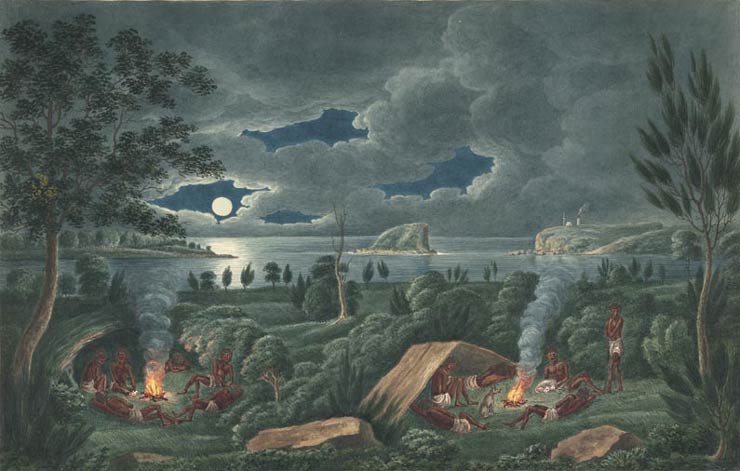Due to scheduled maintenance on Friday 19th April 2024 between 7:00PM and 9:00PM AEST, the Scootle website may face disruption in service. We apologise for any inconvenience caused.
 Indigenous Australians at the Hunter River, c1817
Indigenous Australians at the Hunter River, c1817
TLF ID R4017
This is a 17.7 cm x 27.8 cm watercolour of 12 people from the Awabakal language group with their dogs beside the Hunter River in New South Wales. It is a cloudy night but the moon has broken through and is reflected on the water. The people are gathered around campfires, possibly in two separate family groups, each with a single bark shelter. Two dogs sit near the fire of the group on the right. In the distance an island and a hill with buildings and smoke from a fire can be seen.
